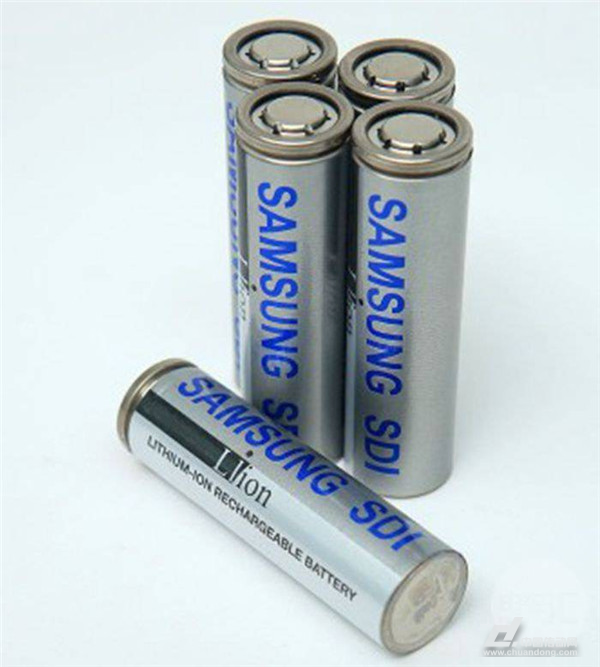
"Fu is unparalleled, and misfortune is not alone." This ancient saying seems to have taken on a new meaning in the case of Samsung SDI.
Recently, Samsung SDI has found itself in an unfavorable situation. As of October 11, reports indicate that there have been at least 10 battery-related incidents worldwide since the launch of the iPhone 8, including cases where devices exploded due to overheating. Interestingly, iFixit recently disassembled an iPhone 8 Plus and found its battery was supplied by Samsung SDI. It’s worth noting that Samsung SDI was also the supplier for the infamous Galaxy Note 7 batteries.
On October 15, the Tianjin Property Rights Exchange Center announced that two state-owned companies transferred 10% and 20% equity in Samsung (Tianjin) Battery Co., Ltd. This move comes as the company has struggled with profitability over the past two years, experiencing a sharp drop in revenue and even facing insolvency this year.
In February of this year, a fire at Samsung's Tianjin battery factory raised public concerns about safety issues. The incident highlighted ongoing challenges for foreign battery manufacturers operating in China.
Foreign battery companies like Samsung SDI, LG Chem, SK Innovation, and Panasonic have been expanding their presence in China since 2013. However, strict regulations on power battery inclusion in the national catalog led to a significant shift. Starting in June 2016, foreign batteries were effectively excluded from the mainstream market, limiting their access to key clients.
While many Chinese automakers still use foreign battery suppliers, they often lack the crucial battery subsidies necessary for survival. For companies reliant on government support, this is a major challenge. However, recent policy changes have allowed foreign firms to produce batteries independently, though the battery catalog remains a critical hurdle.
For new energy vehicle companies, having a “China Core†strategy is now essential. This means building strong local partnerships and adapting to domestic regulations.
Opportunities for independent brands are growing. With the upcoming “double integration†policy, the target for new energy vehicles is set to rise to 10% in 2019 and 12% in 2020. This will force many automakers to accelerate their transition to electric models, creating more room for battery companies in the market.
The three-electric system—comprising batteries, motors, and electronic controls—is the heart of any new energy vehicle. As a result, OEMs are increasingly seeking partnerships with top-tier battery companies or establishing joint ventures to secure high-quality cell technology. Japanese and South Korean giants like LG Chem, Samsung SDI, and Panasonic are actively setting up factories in China, while rumors suggest Bosch may soon enter the power battery space as well.
International automakers such as Daimler, Volkswagen, GM, and BMW are also investing heavily in battery production. Daimler, for example, recently built the largest lithium battery plant in Europe. Meanwhile, BYD, a leading Chinese battery manufacturer, has opened its doors to international collaboration, offering a potential solution for many new energy car companies looking to build joint ventures.
Challenges remain, however. Recent policy updates suggest further relaxation of foreign investment rules in sectors like finance and new energy vehicles. While this could give foreign firms a technological edge through localized production, it also increases competition. For Chinese companies, this may lead to better innovation and stronger domestic brands.
In short, the era of China’s new energy industry entering global competition is inevitable. Companies can no longer rely solely on national protection. Instead, they must adapt, innovate, and strengthen their technological capabilities. By doing so, they can not only survive but thrive in an increasingly competitive market.
Innosilicon Asic Miner:Innosilicon A9 ZMaster,Innosilicon A9++ ZMaster,Innosilicon A9+ ZMaster
Innosilicon is a worldwide one-stop provider of high-speed mixed signal IPs and ASIC customization with leading market shares in Asian-Pacific market for 10 consecutive years. Its IP has enabled billions of SoC's to enter mass production, covering nodes from 180nm to 5nm across the world`s foundries including: GlobalFoundries, TSMC, Samsung, SMIC, UMC and others. Backed by its 14 years of technical expertise in developing cutting-edge IPs and ASIC products, Innosilicon has assisted our valued partners including AMD, Microchip and Microsoft to name but a few, in realizing their product goals.
Innosilicon team is fully devoted to providing the world's most advanced IP and ASIC technologies, and has achieved stellar results. In 2018, Innosilicon was the first in the world to reach mass production of the performance-leading GDDR6 interface in our cryptographic GPU product. In 2019, Innosilicon announced the availability of the HDMI v2.1 IP supporting 4K/8K displays as well as our 32Gbps SerDes PHY. In 2020, we launched the INNOLINK Chiplet which allows massive amounts of low-latency data to pass seamlessly between smaller chips as if they were all on the same bus. With a wide range of performance leading IP in multiple FinFET processes and 22nm planar processes all entering mass production, Innosilicon's remarkable innovation capabilities have been proven in fields such as: high-performance computing, high-bandwidth memory, encrypted computing, AI cloud computing, and low-power IoT.
innosilicon zec miner,Innosilicon A9 ZMaster,innosilicon a9 50ksol miner,innosilicon a9 miner,a9 50ksol zmaster
Shenzhen YLHM Technology Co., Ltd. , https://www.apgelectrical.com